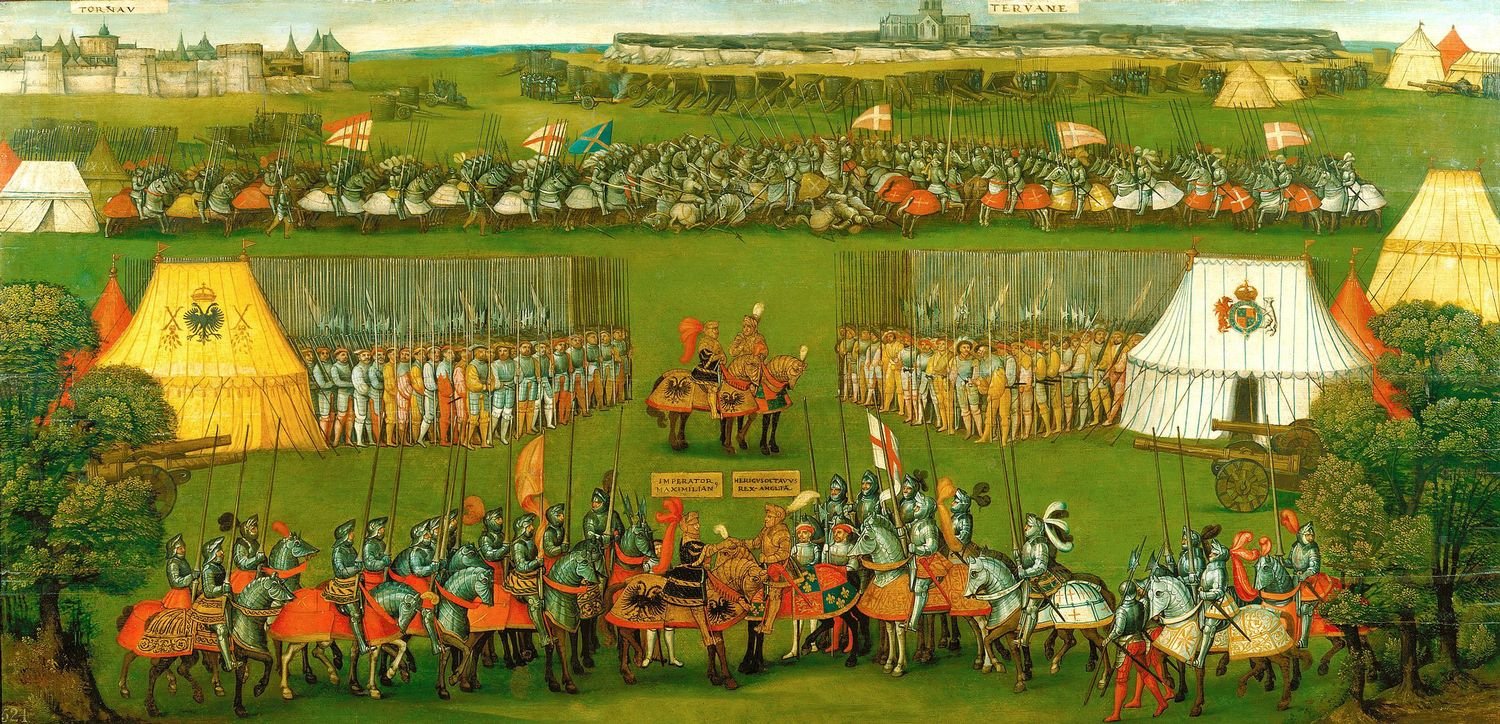
European Armour in the Royal Collection
An introduction to European armour in the Royal Collection.
Edward III (1312-1377) with the Black Prince (1330-1376) after the Battle of Crécy (1346)
Signed and dated 1789RCIN 402430
By the time he was seven years old, Edward, the 'Black Prince' (1330–1376), had been given his own armour. He and his father, Edward III, regularly wore armour, competing together in tournaments and fighting in some of the most important battles of the Hundred Years War. In this painting they clasp hands, having defeated the King of Bohemia at the Battle of Crécy (1346). At that event, the Black Prince is said to have taken the defeated king's feather crest – depicted here at his feet – and later included it in his own heraldic badge, giving rise to the Prince of Wales's feathers as we know them today.
There is, however, limited historical basis for this account, and the scene as a whole has an idealised quality, combining accurate fourteenth-century armour (such as the aventail or flexible curtain of mail attached to Edward III's helmet) with more fanciful pieces. To depict the aventail, West may have been among the first painters to refer to an influential new book on historical dress by Joseph Strutt (published 1774–6), which met increasing demand among artists and the general public for information about 'authentic' fashions of the past.







